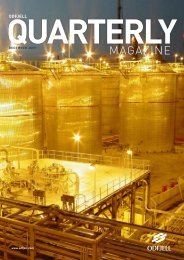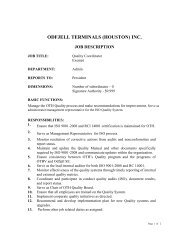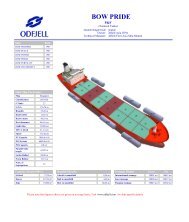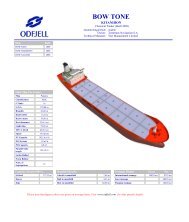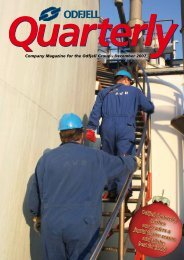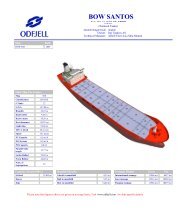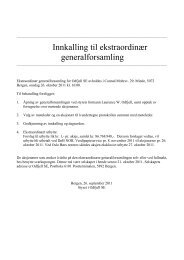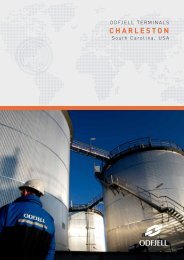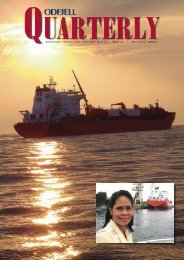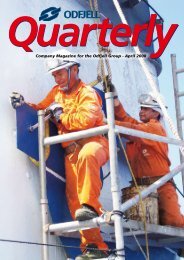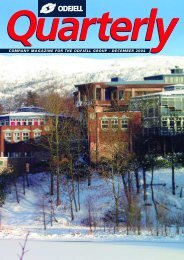Create successful ePaper yourself
Turn your PDF publications into a flip-book with our unique Google optimized e-Paper software.
tive looking concrete buildings. Buttoday, a lot of these buildings arebeing replaced. Meanwhile, today’snickname of the city is “Manhattan atthe Maas”: Rotterdam has the highestconcentration of skyscrapers per squaremetre in the Netherlands, and theRotterdam skyline is unique.With the upward economic moodin the 1950’s and the reconstructionof the Netherlands, Germany andFrance, the Rotterdam port expandedrapidly. Located at the Rhine-Maas delta,Rotterdam developed to be the world’scenter for shipping industry and in 1962Rotterdam became the world’s largestport.ambition to be the best portin the world and to maintainits position as the most importantport in Europe. The strategyis focusing on deep-searelated container business, thechemical sector, storage (warehousing,liquid bulk, possiblynatural gas) and overseas distribution,which all need space toexpand and renew. Already some15 major international companieshave shown serious interestto settle down at Maasvlakte II.Additionally, ship owners willprefer to go there in the future,because of the short pilotage,resulting in faster turnaround.The Rotterdam port area stretches outover more than 40 kilometres, covering10,500 hectares. There are more than46 kilometres of quays/jetties for seagoingvessels, serving 30,000 shipsper year. 4,100 of these vessels were(un)loading either chemicals and/orfoodstuffs, representing around 25million metric tons of inbound cargo.<strong>Odfjell</strong> Seachem had 128 port calls inRotterdam last year and <strong>Odfjell</strong> Ahrenkiel62. Around 60,000 people aredirectly employed in the port with afurther 250,000 in auxiliary services.The reason that Rotterdam becamesuch an important port is the perfecthinterland connections: the rivers Rhine,Maas and their branches. Within a circlewith a radius of 1,440 kilometres (fromBergen to Rome), Rotterdam is serving350 million Europeans. This, togetherwith the Rotterdam entrepreneurialno-nonsense mentality has madeRotterdam what it is today: a great city,which many people take pride in. Thegateway to Europe.Shell commissioned the first oilrefinery in 1903, though the first oilshipment to Rotterdam had alreadytaken place in 1862. In 1929 the FirstPetroleumhaven in Pernis was ready,with Shell settling there in 1936. In 1937the world’s largest oil tanker dischargedin Rotterdam: the 21,000 dwt EmileMiquet. Can you imagine? The growingoil and chemicals industry forcedRotterdam to expand in a westerlydirection where there was plenty ofgrass root land at a safe distance fromthe city. The Botlek area was readyin 1955 and Dow Chemical (now LBCBotlek) was the first to lease a sitein the Botlek. Today’s <strong>Odfjell</strong> terminalfirst opened in December 1957.In 1960 the Europoort-area becameoperational and attracted two moremajor oil-companies (Gulf and BP), butalso a large number of chemical plants.Even today the Rotterdam port is stillexpanding as new companies settlein Rotterdam. Future expansion cannow only take place at the scheduledMaasvlakte II, a further westboundreclamation of 1,000 hectares (10 millionm 2 ) of land.Maasvlakte II will be essential forRotterdam, because of the city’sFrom the Veerhaven, one of the first commercial port-areas in Rotterdam andtoday a historical yacht harbourLocal heroes. The Feyenoord team visiting <strong>Odfjell</strong> Terminals (Rotterdam)ODFJELL Quarterly October 2005 9



